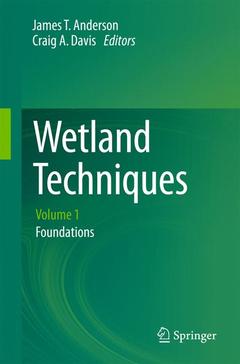Description
Wetland Techniques, 2013
Volume 1: Foundations
Language: English
Subjects for Wetland Techniques:
459 p. · 15.5x23.5 cm · Paperback
Description
/li>Contents
/li>Comment
/li>
Wetlands serve many important functions and provide numerous ecological services such as clean water, wildlife habitat, nutrient reduction, and flood control. Wetland science is a relatively young discipline but is a rapidly growing field due to an enhanced understanding of the importance of wetlands and the numerous laws and policies that have been developed to protect these areas. This growth is demonstrated by the creation and growth of the Society of Wetland Scientists which was formed in 1980 and now has a membership of 3,500 people. It is also illustrated by the existence of 2 journals (Wetlands and Wetlands Ecology and Management) devoted entirely to wetlands.
To date there has been no practical, comprehensive techniques book centered on wetlands, and written for wetland researchers, students, and managers. This techniques book aims to fill that gap. It is designed to provide an overview of the various methods that have been used or developed by researchers and practitioners to study, monitor, manage, or create wetlands. Including many methods usually found only in the peer-reviewed or gray literature, this 3-volume set fills a major niche for all professionals dealing with wetlands.
Preface.- Acknowledgments.- 1. Study Design and Logistics; David A. Haukos.- 2. Wetland Bathymetry and Mapping; Marc Los Huertos and Douglas Smith.- 3. Assessing and Measuring Wetland Hydrology; Donald O. Rosenberry and Masaki Hayashi.- 4. Hydric Soil Identification Techniques; Lenore M. Vasilas and Bruce L. Vasilas.- 5. Sampling and Analyzing Wetland Vegetation; Amanda Little.- 6. Monitoring Wetland Water Quality; Joseph R. Bidwell.- 7. Wetland Biogeochemistry Techniques; Bruce Vasilas et al.- Index.
These books may interest you

Wetland TechniquesVolumes 1-3 158.24 €



